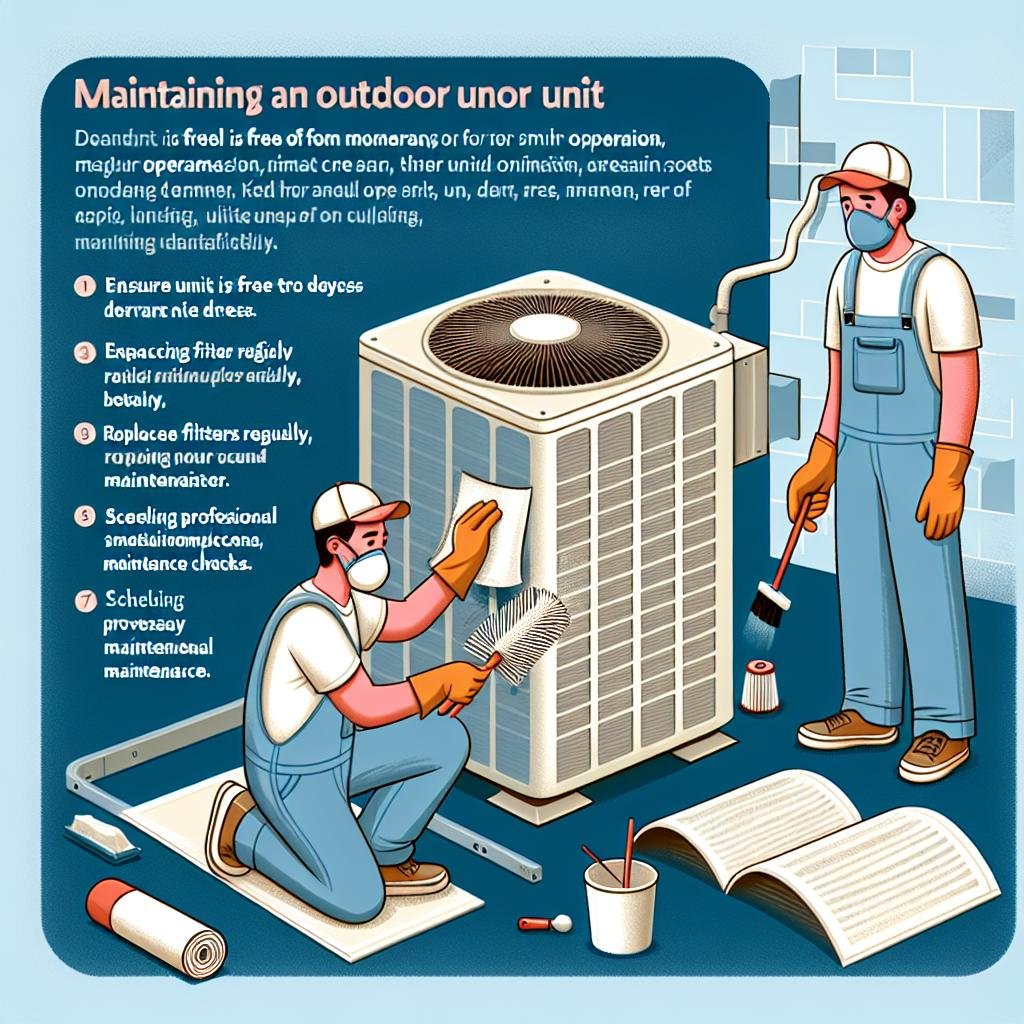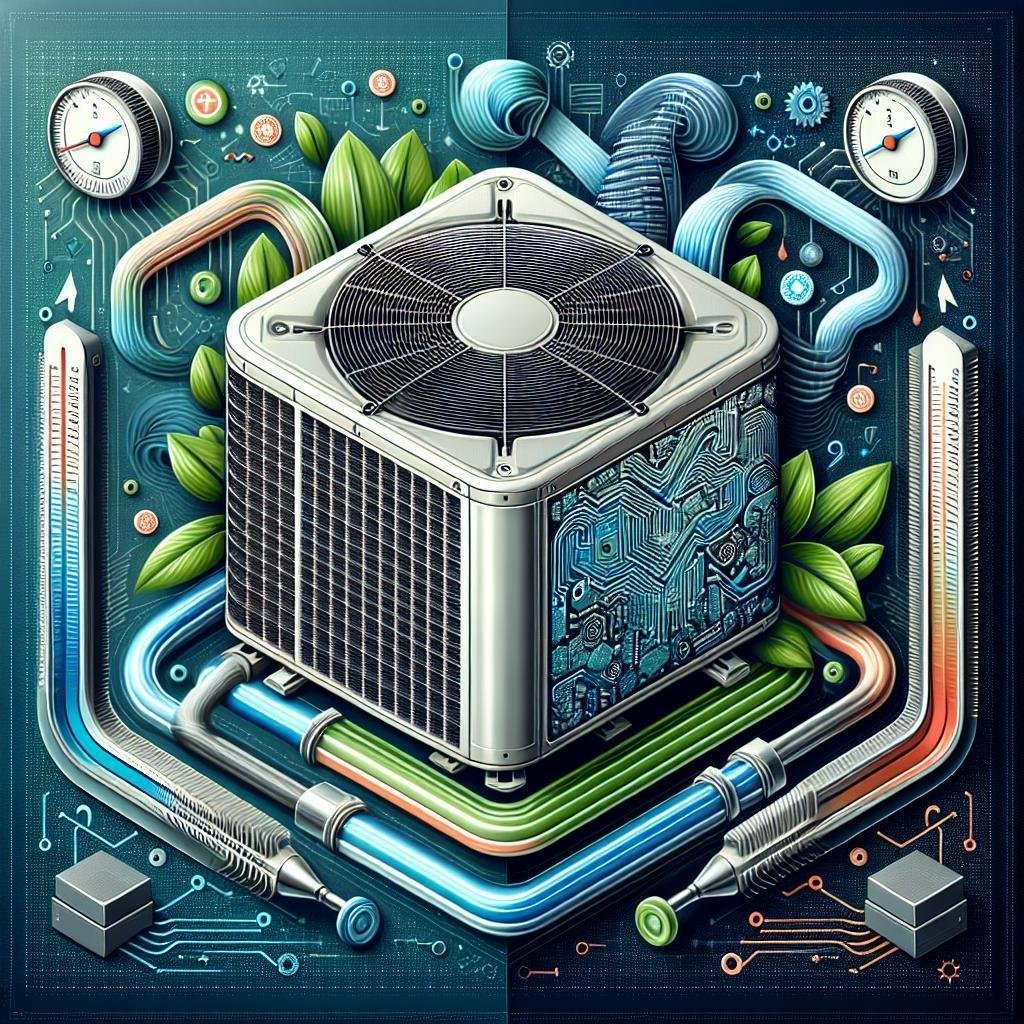Welcome to the wonderful world of efficient cooling with mini split AC systems! In this article, we will dive into the importance of properly sizing and configuring outdoor condenser units for these revolutionary cooling systems. Get ready to learn how to maximize the performance of your mini split AC while minimizing energy consumption. Let’s keep cool together!
Choosing the Right Capacity for Optimal Performance
When selecting the capacity for your outdoor condenser unit, it’s imperative to balance the need for efficient cooling with energy consumption considerations. Over-sizing your outdoor condenser may seem like a safe approach, promising you’ll always have enough cooling power, but it can lead to increased energy consumption, high utility bills, and reduced system longevity. Conversely, under-sizing your unit won’t provide adequate cooling, leaving your space perpetually uncomfortable. Aim for the “Golden Mean” by choosing a unit with a capacity that matches the room size and climate needs.
Here are some tips to help you decide:
- Calculate the BTU: Measure the square footage of the area and use a BTU calculator to determine the required British Thermal Units.
- Climate Considerations: Take into account your local climate. Warmer regions might need a slightly higher capacity.”
- Insulation: Assess the room’s insulation. Well-insulated spaces may require less capacity.
- Professional Consultation: Sometimes consulting with an HVAC professional can save you from potential errors in sizing.
| Room Size (sq ft) | Recommended BTU |
|---|---|
| Up to 150 | 5,000 |
| 150-250 | 6,000 |
| 250-300 | 7,000 |
| 300-350 | 8,000 |

Placement Strategies: Finding the Perfect Spot for Your Condenser Unit
Choosing the right location for your condenser unit can significantly impact the efficiency and longevity of your mini split AC system. It’s paramount to avoid placement in direct sunlight, as excessive heat can hamper the system’s performance. Instead, opt for a shaded location, which could be naturally shaded by trees or the side of your house that gets the least sun exposure. Other considerations include avoiding areas with high foot traffic, since obstructions can hinder airflow and potentially lead to damage. Also, ensure that the unit is elevated off the ground to prevent water damage during rainy seasons.
Another key factor in placement is proximity to your indoor units. Minimizing the distance between the indoor and outdoor units can substantially improve efficiency by reducing the effort needed to transfer refrigerant. Here are some additional tips for optimal placement:
- Ensure clearances: Leave at least two feet of clearance around the unit to ensure proper airflow.
- Avoid enclosed spaces: Placing the condenser in poorly ventilated areas can lead to overheating.
- Secure the unit: Use brackets or stands to stabilize the unit and reduce vibrations.
- Check local codes: Ensure compliance with local installation regulations to avoid future issues.
| Consideration | Recommendation |
|---|---|
| Sunlight Exposure | Opt for shaded areas |
| Foot Traffic | Avoid high traffic zones |
| Ground Elevation | Elevate to prevent water damage |
| Distance to Indoor Unit | Minimize for efficiency |

Understanding Airflow: Maximizing Efficiency with Smart Configuration
Proper airflow management is crucial for enhancing the effectiveness and efficiency of your mini split AC system. One of the key areas to focus on is the outdoor condenser unit. These units need to be positioned correctly and sized appropriately to ensure optimal performance. Here are some best practices to follow:
- Positioning the Unit: Place the outdoor unit in a shaded, well-ventilated area to avoid direct sunlight and ensure adequate airflow. This can prevent overheating and improve energy efficiency.
- Clearance: Maintain at least 24 inches of clearance around the unit. This spacing helps in dissipating heat effectively.
- Elevation: Install the unit on a raised platform to protect it from debris, flooding, and snow accumulation.
Proper sizing of the outdoor condenser unit is just as critical. If the unit is too small, it will struggle to cool the space adequately; if it’s too large, it could result in short cycling, which can shorten the system’s lifespan and increase energy consumption.
| Room Size | Condenser Capacity |
|---|---|
| Up to 350 sq ft | 9,000 BTU |
| 350-500 sq ft | 12,000 BTU |
| 500-800 sq ft | 18,000 BTU |
| 800-1,200 sq ft | 24,000 BTU |

Maintenance Tips: Keeping Your Outdoor Unit Running Smoothly
The key to ensuring your outdoor condenser unit runs smoothly through the seasons lies in regular and strategic maintenance. Start by clearing any debris such as leaves, dirt, or branches that may obstruct the unit’s airflow. A clear and unobstructed unit will function more efficiently, providing optimal cooling performance. Trim any overgrown vegetation around the unit and consider placing it on a sturdy base to prevent dirt accumulation. Regularly rinse the condenser coils using a gentle stream of water to eliminate dust and grime build-up. Periodically check the condensate drain to ensure it is not clogged, as proper drainage is essential for avoiding excess moisture and potential damage.
Another crucial step is to inspect and clean or replace the air filters inside your mini split AC system. A clogged filter can restrict airflow, forcing the unit to work harder and consume more energy. Here’s a quick checklist to keep your filters and outdoor unit in top condition:
- Inspect filters monthly – especially during heavy-use seasons.
- Clean filters regularly using gentle water rinse or vacuum cleaning.
- Replace filters if they show signs of wear or damage.
By integrating these simple yet effective maintenance practices, you’ll ensure your outdoor unit remains in peak condition, extending its lifespan and contributing to efficient cooling.
Q&A
Q&A: Efficient Cooling with Properly Sized and Configured Outdoor Condenser Units for Mini Split AC Systems
Q: Why is properly sizing an outdoor condenser unit important for my mini split AC system?
A: Great question! Properly sizing your outdoor condenser unit ensures that your mini split AC system operates efficiently. If the unit is too small, it won’t cool your space adequately, working overtime and racking up energy costs. On the flip side, an oversized unit will cycle off and on too frequently, leading to wear and tear and inefficient operation. The right size is the key to keeping your home perfectly cool and your energy bills low.
Q: How can I determine the correct size for my outdoor condenser unit?
A: It’s actually a bit of a Goldilocks situation – you need it just right! The first step is to conduct a load calculation, which considers factors like the size of the space, insulation quality, window exposure, and climate. An HVAC professional typically does this calculation using specialized software, or there are online calculators available if you’re a DIY enthusiast. It’s always best to consult with a pro to make sure all variables are accurately accounted for.
Q: What configuration options should I consider for my outdoor condenser unit?
A: Configuration choices can indeed make a big difference! Ideally, your condenser unit should be placed in a shaded, well-ventilated area to maximize efficiency. Ensure there’s enough clearance around the unit for airflow and maintenance access – think at least two feet on each side. Elevated mounting can protect the unit from debris, flooding, or snow buildup. For noise-sensitive areas, consider a model known for quieter operation.
Q: Can the wrong size or configuration of the condenser really affect my AC’s performance?
A: Absolutely, and it’s more common than you might think! An incorrectly sized or poorly placed condenser can lead to issues like uneven cooling, higher energy consumption, and shortened unit lifespan. You might also face frequent maintenance problems and reduced comfort – things no one wants during peak summer months. Precision matters here!
Q: Is it challenging to install a condenser unit by myself, or should I get professional help?
A: While a handy DIY-er might tackle this, it’s best left to the pros. Proper installation isn’t just about physical placement; it involves ensuring correct refrigerant levels, electrical connections, and system balancing. Professionals bring expertise and tools that guarantee a precise setup, saving you headaches down the line.
Q: What’s the takeaway for an efficient mini split AC system?
A: The secret sauce is proper sizing and thoughtful configuration. Invest time in accurate load calculations, consult with HVAC professionals, and be mindful of where and how your condenser is installed. Doing so ensures your mini split system runs efficiently, keeps you cool, and sips rather than guzzles electricity.
Q: Any last nugget of wisdom for mini split AC owners?
A: Maintenance, maintenance, maintenance! Regularly check and clean filters, inspect the outdoor unit for debris, and schedule annual professional checkups. A little TLC goes a long way in keeping your system purring like a (cool) kitten.
Thanks for joining us on this cooling journey! Stay cool and comfortable with these handy tips, and remember – efficiency is the name of the game! 🌬❄️
Final Thoughts
As we wrap up our deep dive into the world of efficient cooling, it becomes evident that the secret to a blissfully cool home lies not just within, but also outside, with a meticulously sized and configured outdoor condenser unit for your mini-split AC system. By understanding the harmony between your indoor comfort and that unassuming unit braving the elements outside, you invite efficiency, savings, and endless breezy days into your life.
So next time you hear the gentle hum of your mini-split system, remember the symphony of calculations and considerations ensuring you stay cool. Here’s to making informed choices, staying comfortably chill, and enjoying every sunbeam worry-free. Until next time, may your summers be serene and your cooling precisely perfect! 🌞❄️👷♂️

